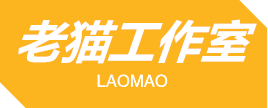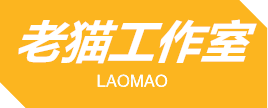1. 从“口袋”里取钱:可取资金
Imagine you're standing at an ATM. When you insert your debit card and enter your PIN, you're not actually grabbing notes from a secret stash inside the machine. Instead, you're accessing your "available funds," the green light you need to make a withdrawal. These are the hard-earned bucks chilling in your bank account, ready to be spent at your command. Think of it as the money in your virtual "wallet."
2. The Back-Up Squad: Usable Funds
Now, let's say you're a bit strapped for cash, but you've got some uncashed checks or other pending deposits on the way. These funds are not yet in your "available" balance, but they're still considered "usable" and can serve as a safety net. If you need to pay a bill or splurge on a treat, you can temporarily tap into these pending funds, although there might be a small delay until they fully clear.
3. The Waiting Game: Pending Transfers
Let's complicate things a bit. Suppose you've transferred some money to your friend's account, or vice versa. Until that transfer fully processes, it's not considered part of your "available" funds. It's in a temporary limbo, like a package in transit. You can't spend it or withdraw it, and it doesn't reduce the balance in your friend's account until it's finalized.
4. The Fine Print: Holds and Restrictions
In the world of banking, there are always a few caveats. Some transactions, especially large ones or those involving international wires, may be put on hold or restricted by the bank for security reasons. When this happens, your funds may be considered "usable" but not "available." You can't touch them right away, so it's wise to be aware of any potential delays or limitations before counting on these funds.
5. The Importance of Clarity
Understanding the difference between available and usable funds is crucial for managing your money effectively. It's like having a detailed map of your financial landscape. By knowing exactly what you can spend and when, you can avoid overdraft fees, bounced checks, and other embarrassing financial mishaps. And remember, if you're ever in doubt, don't hesitate to give your bank a call. They're always happy to clarify and help you navigate the ins and outs of your account activity.
Imagine you're standing at an ATM. When you insert your debit card and enter your PIN, you're not actually grabbing notes from a secret stash inside the machine. Instead, you're accessing your "available funds," the green light you need to make a withdrawal. These are the hard-earned bucks chilling in your bank account, ready to be spent at your command. Think of it as the money in your virtual "wallet."
2. The Back-Up Squad: Usable Funds
Now, let's say you're a bit strapped for cash, but you've got some uncashed checks or other pending deposits on the way. These funds are not yet in your "available" balance, but they're still considered "usable" and can serve as a safety net. If you need to pay a bill or splurge on a treat, you can temporarily tap into these pending funds, although there might be a small delay until they fully clear.
3. The Waiting Game: Pending Transfers
Let's complicate things a bit. Suppose you've transferred some money to your friend's account, or vice versa. Until that transfer fully processes, it's not considered part of your "available" funds. It's in a temporary limbo, like a package in transit. You can't spend it or withdraw it, and it doesn't reduce the balance in your friend's account until it's finalized.
4. The Fine Print: Holds and Restrictions
In the world of banking, there are always a few caveats. Some transactions, especially large ones or those involving international wires, may be put on hold or restricted by the bank for security reasons. When this happens, your funds may be considered "usable" but not "available." You can't touch them right away, so it's wise to be aware of any potential delays or limitations before counting on these funds.
5. The Importance of Clarity
Understanding the difference between available and usable funds is crucial for managing your money effectively. It's like having a detailed map of your financial landscape. By knowing exactly what you can spend and when, you can avoid overdraft fees, bounced checks, and other embarrassing financial mishaps. And remember, if you're ever in doubt, don't hesitate to give your bank a call. They're always happy to clarify and help you navigate the ins and outs of your account activity.













还没有评论,来说两句吧...